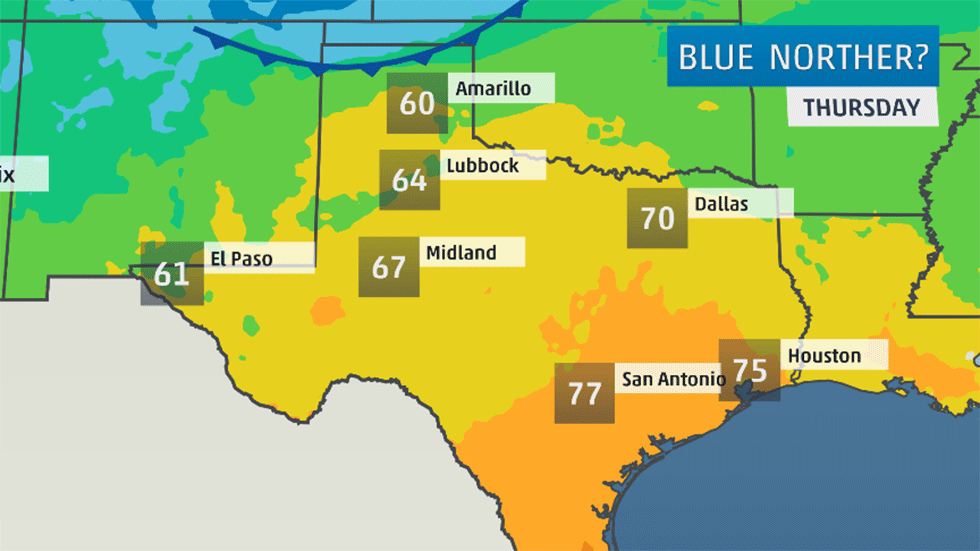Blue Norther
Also known as a Texas Norther, this intense cold front is marked by a sudden drop in temperature across the Great Plains and portions of the Midwest. These temperature drops have been observed to be nearly 25°F in one hour. The passage of a blue norther is usually associated with heavy precipitation, strong winds and severe weather (tornadoes and hail). Seen during the winter months, locations in these regions can experience warm, humid air masses prior to the passage of the front. Sometimes snow will accompany a blue norther. One of the biggest Blue Norther events happened on Nov. 11, 1911 when parts of the Great Plains and Midwest reported high temperatures in the lower 80s on the afternoon of the 11th and low temperatures in teens the following morning.

Source: Blue Norther | Weather.com